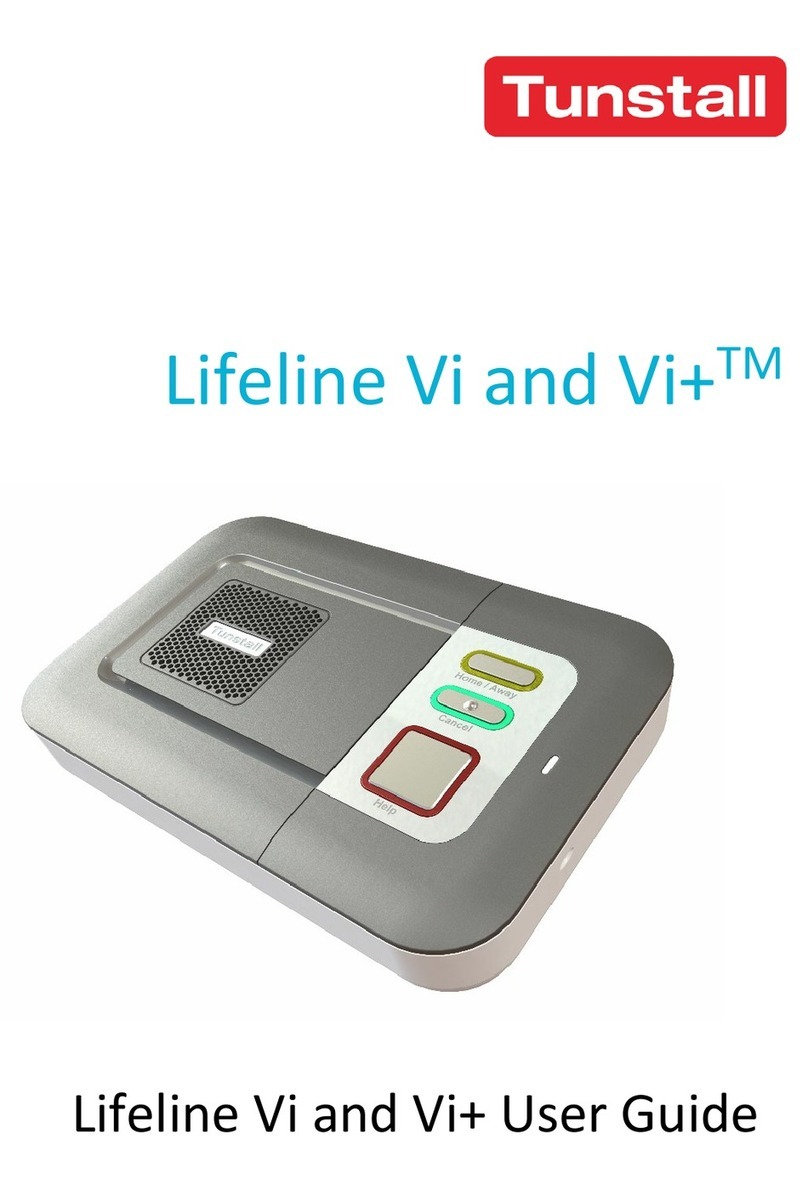Lifeline Smart HubTM & Device Management Platform Contents
D5727050C Page 3 of 80
Contents
Contents............................................................................................................. 3
Appendices ........................................................................................................ 5
1Introduction ............................................................................................. 6
1.1 Document purpose......................................................................................................................6
1.1.1 Versions .......................................................................................................................................................................6
1.2 Overview......................................................................................................................................6
1.2.1 Smart Hub communication methods...........................................................................................................................6
1.3 Typographical conventions..........................................................................................................8
1.4 Related documents......................................................................................................................8
2What’s in the Smart Hub box.................................................................... 9
2.1 The Smart Hub.......................................................................................................................... 10
2.1.1 Front/top view...........................................................................................................................................................10
2.1.2 Rear view ...................................................................................................................................................................10
2.1.3 Base view...................................................................................................................................................................10
2.2 Warning/status lights on the Smart Hub.................................................................................. 11
2.3 Personal radio trigger............................................................................................................... 13
3Installing the Smart Hub......................................................................... 14
3.1 Stage 1 –Determine the location of the Smart Hub ................................................................ 14
3.2 Stage 2 –Connect leads and power up the Smart Hub............................................................ 15
3.2.1 Connect the optional Ethernet cable.........................................................................................................................15
3.2.2 Connect the mains power adaptor ............................................................................................................................15
3.3 Stage 3 –Check use of the internal antenna............................................................................ 16
3.4 Stage 4 –Confirm the cellular signal strength.......................................................................... 16
3.5 Stage 5 –Set up the external cellular antenna......................................................................... 17
3.6 Stage 6 –Prepare sensors for use as the virtual property exit sensor..................................... 18
3.7 Stage 7 –Register personal triggers/telecare sensors ............................................................. 18
3.8 Stage 7 –Test the range of personal triggers/telecare sensors............................................... 19
3.9 Stage 8 –Connect hardwired devices ...................................................................................... 19
3.9.1 Connect a hardwired input device.............................................................................................................................20
3.9.2 Connect a hardwired output device ..........................................................................................................................20
3.10 Stage 9 –Fit the Smart Hub in the required location............................................................... 21
3.10.1 External antenna........................................................................................................................................................21
3.10.2 Wall mounting with pattress .....................................................................................................................................22
3.10.3 Wall mounting without pattress................................................................................................................................23
3.10.4 Fitting the table stand................................................................................................................................................24





























